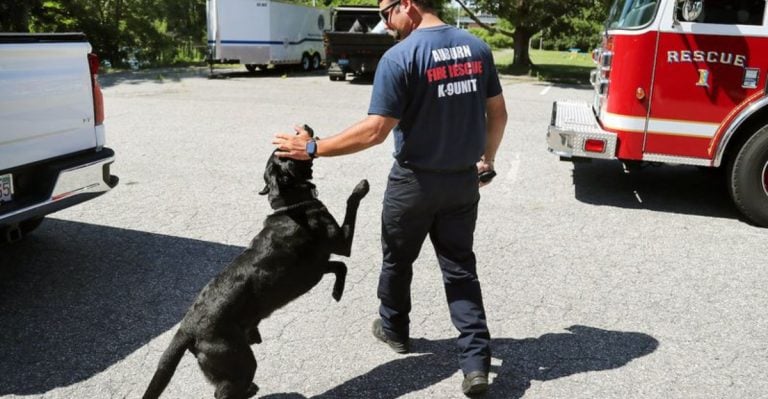15 Warning Signs Your Dog Is Grieving Someone They Loved
When a beloved person passes away, grief doesn’t just affect the humans left behind—it can shake a dog’s entire world. Dogs may not understand death the way we do, but they undeniably feel the absence of someone they bonded with deeply. Whether it’s a longtime owner, a family member, or even a fellow pet, the loss leaves a noticeable mark on a dog’s emotional state. Many pet parents are surprised to discover just how profoundly their dogs can mourn, often displaying behaviors that mirror human sadness, anxiety, and even depression.
Unlike people, dogs can’t tell us how they feel. Instead, they express their heartache through changes in daily habits, mood, and physical behavior. You may notice your furry friend refusing meals, sleeping in unusual places, or gazing longingly out the window. Some dogs become clingier, while others withdraw entirely. These signs aren’t just quirks—they’re cries for comfort, connection, and stability.
If you’ve recently lost someone important in your household and you’re wondering whether your dog is hurting too, paying close attention to these behaviors can help you understand what they’re going through. Recognizing the signs of canine grief is the first step toward helping your pup heal. While no two dogs grieve in the same way, there are clear patterns experts have observed that point to emotional distress following a loss.
In this guide, we’ll explore 15 common warning signs that your dog may be grieving someone they loved. Some are subtle, others more obvious—but all deserve your attention. Knowing what to look for can help you respond with compassion, structure, and the support your dog needs to process their loss and gradually return to emotional balance. After all, they were there for us—now it’s our turn to be there for them.
1. Loss of Appetite
Food becomes meaningless when a dog’s heart is heavy with grief. Your normally enthusiastic eater might suddenly turn away from their favorite meals, sometimes refusing to eat altogether for days.
This decreased interest in food stems from the emotional distress they’re experiencing. The absence of someone special disrupts their sense of normalcy and security.
Watch for weight loss and offer tempting, aromatic foods to encourage eating. Small, frequent meals might be more appealing than regular portions during this difficult time.
2. Sleeping in Their Owner’s Spot
The lingering scent provides comfort when everything else feels wrong. Your grieving dog might suddenly claim the departed person’s favorite chair, side of the bed, or spot on the couch—places they normally wouldn’t frequent.
This behavior represents their attempt to stay connected to someone they miss terribly. The familiar smell offers a momentary sense that their loved one isn’t completely gone.
Many owners notice their dogs curling up with items of clothing or pillows that carry the departed’s scent, sometimes whimpering softly while nuzzling these precious reminders.
3. Waiting by the Door or Window
Faithful to the end, grieving dogs often maintain a heartbreaking vigil. Your pet might spend hours staring out windows or sitting by the front door, ears perking up at every passing car or footstep on the sidewalk.
This waiting behavior stems from their inability to understand permanent absence. They’re genuinely expecting their loved one to return at any moment, just as they always did before.
Some dogs maintain this ritual for weeks or even months, gradually spending less time on watch as they slowly adapt to their new reality.
4. Increased Whining or Howling
The silent house becomes filled with mournful sounds. Dogs experiencing grief often vocalize their distress through prolonged howling, whimpering, or unusual barking patterns that seem to come from nowhere.
These vocalizations typically increase during times when the deceased person would normally be present—dinner time, bedtime, or when arriving home from work. Your dog is literally calling out for their missing person.
Pay attention to the timing and intensity of these sounds, as they provide insight into when your dog is feeling the absence most acutely.
5. Becoming Withdrawn and Depressed
The sparkle fades from their eyes as grief takes hold. Once social and engaged, your dog might retreat to quiet corners of the house, showing little interest in family activities or visitors.
This withdrawal resembles depression in humans—a genuine emotional response to loss. You’ll notice a flatness to their demeanor, with fewer tail wags and less enthusiastic greetings.
Many grieving dogs lose interest in surroundings that once excited them, moving through daily routines with a mechanical quality that lacks their usual joy and engagement.
6. Restlessness and Pacing
Anxiety manifests as constant motion when grief overwhelms your dog. The clicking of nails on hardwood floors becomes a midnight soundtrack as they pace from room to room, searching for what’s missing.
This restlessness represents their internal distress externalized through movement. Unable to settle or find comfort, they wander the house as if hoping to discover their loved one in some overlooked corner.
The behavior often intensifies at night when the house grows quiet and the absence feels more pronounced, making it difficult for both you and your pet to get restful sleep.
7. Becoming More Clingy
Separation anxiety intensifies after a loss. Your grieving dog might suddenly become your shadow, following you from room to room with a desperation that feels almost panicked.
This clinginess stems from fear of losing another loved one. Having experienced one disappearance, they’re determined not to let it happen again, leading to behaviors like leaning against you constantly or panicking when you prepare to leave home.
Many dogs will try to maintain physical contact at all times—sleeping pressed against you, sitting on your feet, or squeezing into your lap regardless of their size.
8. Avoiding Certain Areas
Memory triggers lurk in familiar spaces. Your dog might suddenly refuse to enter certain rooms or areas strongly associated with the deceased—perhaps a home office, workshop, or the spot where a bed once stood.
This avoidance behavior reveals their emotional intelligence and memory capabilities. The absence feels most acute in spaces filled with sensory reminders, causing them to create detours around these painful locations.
Some dogs will stand at the threshold of these areas, whining softly but refusing to enter, even when encouraged with treats or toys.
9. Losing Interest in Walks and Playtime
Joy disappears from activities once treasured. The leash that used to trigger excitement now elicits only a halfhearted response—or none at all.
This disinterest in play and exercise reflects their emotional state rather than physical illness. The fun has drained from activities because the person who made them special is gone, particularly if the deceased was their primary walking or playing companion.
Even toys that were once favorites might lie untouched for weeks, with play sessions becoming shorter and less enthusiastic when they do occur.
10. Developing Anxiety or Destructive Behaviors
Emotional turmoil erupts through unexpected channels. Your previously well-behaved dog might suddenly begin destroying furniture, chewing doorframes, or digging holes in the yard—behaviors that seem to appear from nowhere.
These destructive actions aren’t spite or misbehavior but manifestations of profound anxiety and stress. The intensity of their emotions becomes too overwhelming to contain, resulting in these physical outlets.
Separation-related destruction often increases, with damage occurring primarily when left alone, as abandonment fears intensify after experiencing a significant loss.
11. Seeking Out Other Pets for Comfort
Shared grief creates unexpected bonds. Dogs who previously maintained polite distance from other household pets might suddenly seek their companionship, sleeping curled together or staying unusually close throughout the day.
This behavior reveals their need for comfort and understanding during loss. Fellow animals provide warmth, familiarity, and a sense of pack security when the family structure has been disrupted.
Many pet owners report that previously competitive animals develop surprising alliances during grief, with cats and dogs forming temporary truces or even friendships in response to their shared experience of loss.
12. Slow Healing and Emotional Recovery
Grief’s timeline varies widely among our canine companions. Some dogs begin showing improvement within weeks, while others carry visible signs of mourning for months or even longer.
This gradual healing process mirrors human grief in many ways. You’ll notice good days mixed with setbacks—moments of playfulness followed by periods of renewed sadness or withdrawal.
Recovery often follows a pattern where specific behaviors improve first: appetite might return before playfulness, or sleep patterns normalize before social engagement. Each small improvement represents a step in their healing journey.
13. Excessive Grooming or Licking
Stress manifests physically through repetitive self-soothing behaviors. Your grieving dog might suddenly develop bald spots from over-licking their paws or flanks, sometimes to the point of creating skin irritations.
This excessive grooming serves as a coping mechanism similar to human nervous habits. The rhythmic licking releases endorphins that temporarily calm their anxiety, making it a difficult cycle to break.
Pay particular attention to specific target areas—front paws, tail base, or flanks—as these can become raw without intervention, potentially requiring medical treatment alongside emotional support.
14. House Soiling
Bathroom habits regress during emotional distress. Even perfectly house-trained dogs might suddenly begin having accidents indoors, often in unusual locations or at unexpected times.
This regression isn’t deliberate but stems from their emotional state disrupting normal bodily awareness. Anxiety and depression can affect their ability to recognize bathroom needs or hold themselves until appropriate times.
Medical causes should always be ruled out first, but when coupled with other grief symptoms, house soiling often represents another facet of their emotional struggle rather than a physical problem.
15. Returning to the Owner’s Grave or Last Location
Loyalty transcends understanding in these heartbreaking moments. Some dogs display an almost supernatural ability to locate where their person last was—whether a gravesite, hospital, or the spot of an accident.
This behavior represents the purest expression of their bond and devotion. Stories abound of dogs who travel considerable distances to reach these locations, sometimes sitting vigil for hours when they arrive.
Rural dog owners particularly report this phenomenon, with pets repeatedly returning to final resting places even when these locations are far from home or in areas the dog wouldn’t normally visit.





















